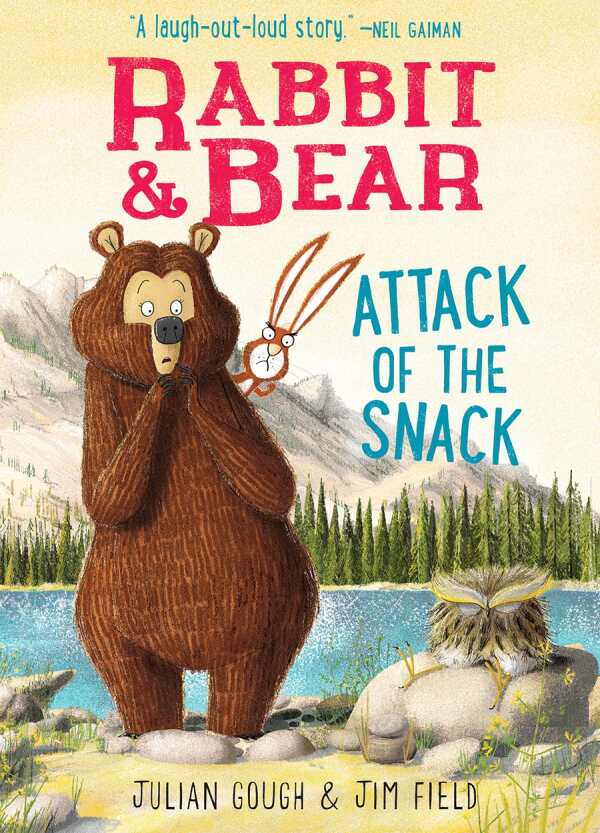
Rabbit & Bear
Attack of the Snack
Julian Gough’s delightful Rabbit and Bear: Attack of the Snack involves misunderstandings, apologies, and friendship.
Best friends Bear and Rabbit are enjoying a summer swim when a mysterious creature crashes into their lake. With the help of their forest companions, they identify it as an owl, a creature Rabbit is sure is a deadly monster. With Rabbit whipping the other animals into a frenzy, accusations and assumptions fly, leaving it up to Bear to remind everyone that different doesn’t mean bad, and that friends come in all shapes and sizes.
That the story is straightforward means that there’s room for important lessons to develop. Rabbit learns the power of apologizing, and Bear the importance of speaking up. Despite these themes, the tone is never serious or heavy. Rather, the story is woven from childlike humor and wit, with the animals comparing their poo habits to realize they are all different in their own ways, and Owl showing off her burping skills to make them all laugh.
Illustrations add further allure to the story. The text is placed around and throughout the illustrations so that they never feel disconnected from each other. The characters are expressive: their emotions, from disgust to delight, are rendered with just a few strokes of the pen. They contain context clues for words or situations that could be otherwise unclear, and their monochromatic color scheme means that particular characters and emotions are easy to highlight, as with the addition of just a dash of canary yellow.
Rabbit and Bear: Attack of the Snack is a humorous, touching story that’s perfect for new and intermediate readers.
Reviewed by
Vivian Turnbull
Disclosure: This article is not an endorsement, but a review. The publisher of this book provided free copies of the book to have their book reviewed by a professional reviewer. No fee was paid by the publisher for this review. Foreword Reviews only recommends books that we love. Foreword Magazine, Inc. is disclosing this in accordance with the Federal Trade Commission’s 16 CFR, Part 255.
